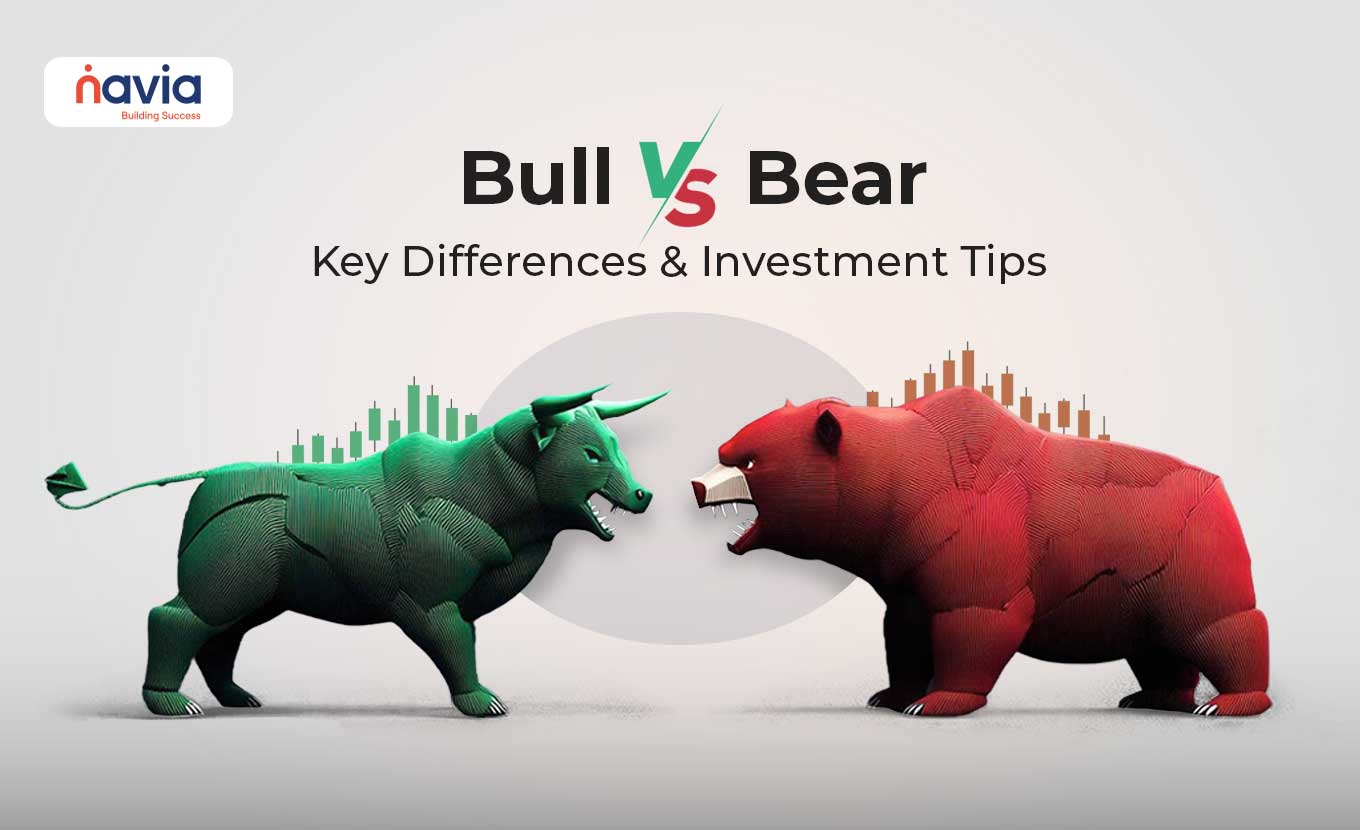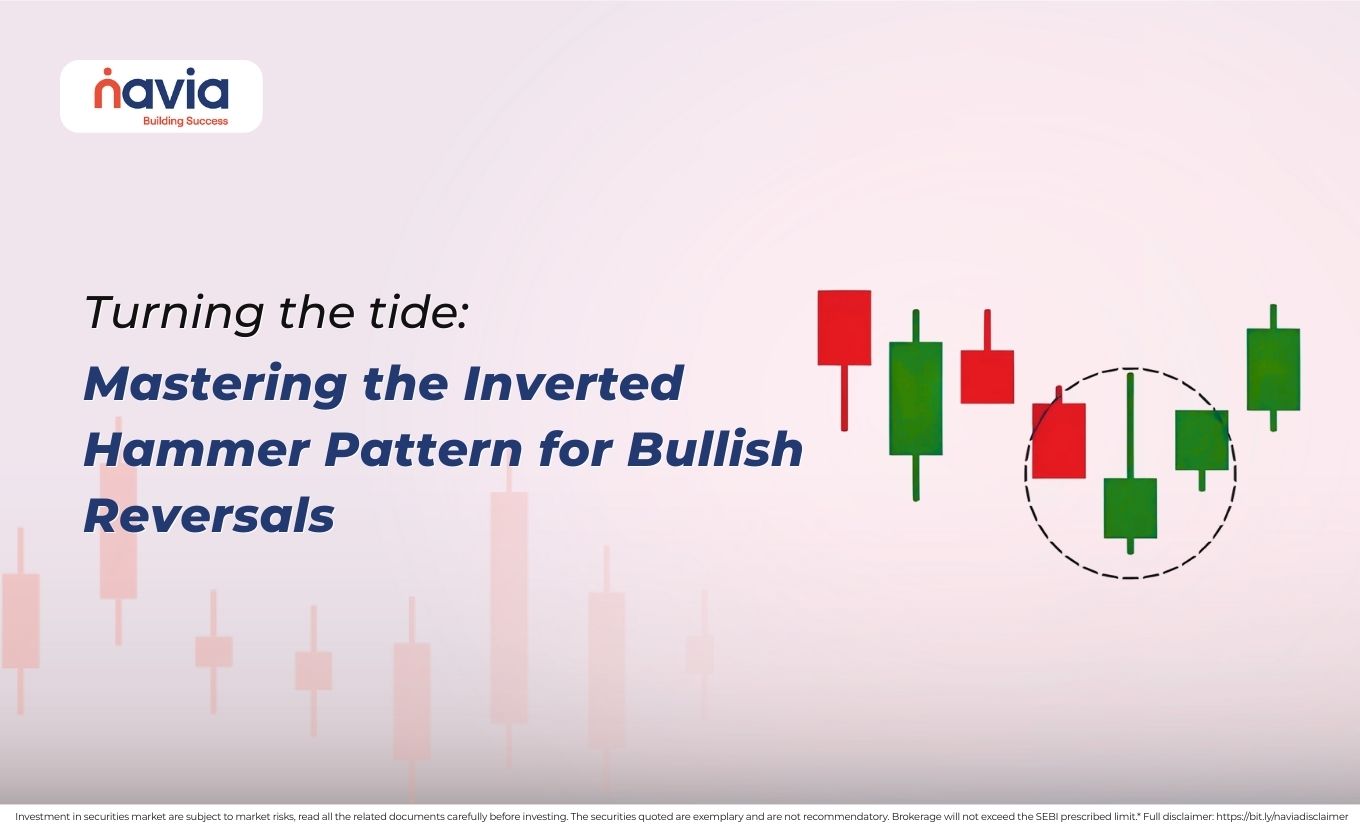Bull Vs Bear Market: Key Differences and Investment Tips

In the stock market world, every investor should grapple the ever-shifting terrain of the bull and bear market. These two different economic outlooks and investor behaviors are an essential term that every investor should know. Whether you’re a new investor or honing your strategy, it is necessary to understand how to thrive in both bull and bear market phases.
Here’s your comprehensive guide that will recognizing market moods, bull market vs bear market and adjusting your investment journey accordingly.
What Do Bull and Bear Mean in the Stock Market?
Most people don’t know about the exact meaning of bull and bear market; the term is very simple. A bull market refers to a sustained period where overall stock prices are rising, strong economic indicators and rising corporate earnings. Conversely, a bear market signals a decline of 20% or more, economic slowdown and falling investor confidence.
We can say that these trends are like two sides of a coin, each present distinct opportunities and risks for investors. So, before diving into the investing world, you must understand the differences between them.
Similarities Between Bull and Bear Markets
We already saw that bull and bear phases are different in their direction, like that they share certain characteristics too, let’s see what they are!
🠖 Both are influenced by economic conditions like GDP, investor confidence and interest rates
🠖 Investor psychology has a major role in both scenarios; often amplifying market moves either through FOMO in bull markets or panic selling in bear markets
🠖 Neither phase lasts forever- it’s the cyclical nature of markets that opens the door for strategic investing across both paths

Differences Between Bullish and Bearish Market
| Aspect | Bull Market | Bear Market |
|---|---|---|
| Direction of the Market | Rising stock prices | Falling stock prices |
| Stock Performance | Stock price rise by 20% | Stock price decline by 20% or more |
| Investor Sentiment | Confident, happy | Fearful, afraid to invest more |
| Economic Conditions | Growth, rising corporate earnings | Economic slowdown, high volatility, weak earnings |
| Volatility | Relatively lower | Higher |
| Time Frame | Last for few months to years | Last for few months to years |
| Typical Strategy | Growth investing, accumulating equities | Defensive positioning, seeking discounted entry points |
| Launch of Initial Public Offerings (IPOs) | Ideal for IPO launching | Not ideal for IPO launching |
| Interest Rates | Low or stable | Rise |
How to Invest in a Bull Market Vs Bear Market?
Investing strategies depend on whether you’re in a bull or bear market. Below you can see some strategies that will help you to navigate easily.
Investing in Bull Market
If the market is on the rise means, it’s a bull market, at that time investor confidence and prices of stocks also higher. So, you need some strategies to manage it effectively, some of them are listed below;
🔹 In bull markets, many investors prefer long-term holding strategies, focusing on growth-oriented companies.
🔹 Focus on the companies who are growing quickly, they will perform well during economic expansions.
🔹 Diversifying your portfolio is important in the bull market, so you must spread your investments across various sectors and stocks.
🔹 If you invested in stocks offering a dividend, reinvest into it because it will help to grow your portfolio and give you an income.
Investing in Bear Market
The prices are falling, and the investor sentiment is negative, we can call it a bear market. Let’s see how to navigate this hardest situation;
🔹 Shifting your investments to bonds or fixed-income securities will offer stability.
🔹 If stock price falls the dividend-paying stocks will provide you with a steady income so keep investing in these stocks.
🔹 Use hedging strategies like investing in ETFs and Options, that can protect your investment from market downturns.
🔹 Invest in companies that offer essential goods and services like healthcare and consumer products. Because they will hold their value better by providing products even during economic slowdowns.
Conclusion
Understanding the bear versus bull market and mastering how to invest in both will help both seasoned and new investors. To make better decisions you must be aware of the energy of a bull and the caution of a bear. We know market cycles will repeat, but the prepared strategies of an investor will stay ahead.
Whether it’s a bull or bear market, investors should rely on disciplined strategies, research, and long-term goals to navigate effectively.
Do You Find This Interesting?
Frequently Asked Questions
What is the difference between a bear market and a bull market?
A bull market refers to a period when stock prices rise steadily, reflecting investor optimism, strong economic growth, and higher corporate earnings. A bear market, on the other hand, is when stock prices fall by 20% or more from recent highs, often driven by pessimism, economic slowdown, or uncertainty.
How can beginners understand bull/bear markets?
Beginners can understand bull and bear markets by observing market trends and investor behavior. In a bull market, there is rising demand for stocks, high trading volumes, and increasing prices. In a bear market, prices fall consistently, selling pressure increases, and investors move to safer assets.
How to predict bear market?
While predicting a bear market with certainty is impossible, investors can watch for warning signals such as:
🠖 Rising inflation and interest rates
🠖 Weakening corporate earnings
🠖 Global or domestic economic slowdown
🠖 High levels of market speculation followed by corrections
🠖 Declining investor confidence
Using technical indicators (like moving averages) and economic indicators (like GDP growth and unemployment data) can also provide early hints.
What is FOMO buying?
FOMO (Fear of Missing Out) buying happens when investors rush to buy stocks simply because others are buying and prices are rising. Instead of making informed decisions, they follow the crowd, fearing they will miss profits.
What are the signs of a bull market?
A bull market usually shows these signs:
● Consistently rising stock prices
● High investor confidence
● Increased corporate earnings
● Strong economic indicators (GDP growth, low unemployment, stable inflation)
● Higher trading volumes and IPO activity
How to determine bull or bear market?
To determine whether it’s a bull or bear market, look at market performance over time:
🠖 If stock indices (like Nifty or Sensex) rise 20% or more from recent lows, it signals a bull market.
🠖 If indices fall 20% or more from recent highs, it indicates a bear market.
DISCLAIMER: Investments in securities market are subject to market risks, read all the related documents carefully before investing. The securities quoted are exemplary and are not recommendatory. Full disclaimer: https://bit.ly/naviadisclaimer.






